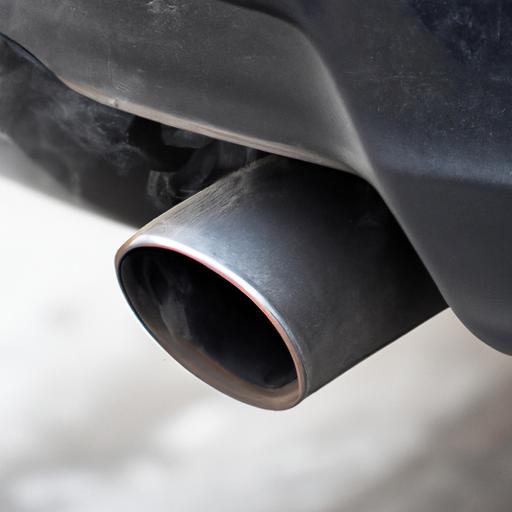As we cruise through the bustling streets, the rhythmic purr of our car engines fills the air. But have you ever wondered what lies beneath the surface? Are these vehicles silently contributing to the invisible threat of carbon monoxide (CO) emissions? In this article, we delve into the world of car emissions and unravel the truth behind the question, “do cars produce carbon monoxide?”
Before we dive into the specifics, let’s acknowledge the importance of understanding car emissions. Our environment is at a critical crossroads, grappling with the consequences of excessive greenhouse gas emissions. By comprehending the impact of car emissions, we can take informed steps to mitigate their harmful effects.
Carbon monoxide (CO), a colorless and odorless gas, is a key player in this narrative. While it may seem harmless, it poses significant risks to both human health and the environment. CO is primarily produced through incomplete combustion of fossil fuels, such as gasoline, used by our beloved automobiles. This results in the release of harmful emissions into the atmosphere.
Now that we have established the significance of car emissions and the presence of carbon monoxide, let’s unveil the purpose of this article. Our aim is to shed light on the role of cars in carbon monoxide production, the impact it has on our surroundings, and the measures we can take to curb these emissions. By the end of this journey, you will be equipped with the knowledge to make environmentally conscious choices and understand the importance of reducing car-related carbon monoxide emissions.
So, fasten your seatbelts as we embark on this enlightening exploration into the world of car emissions and carbon monoxide. Together, let’s unravel the truth and pave the way for a cleaner and safer future.
What is Carbon Monoxide (CO)?
A. Definition and Characteristics of Carbon Monoxide
To truly grasp the impact of car emissions, we must first understand the nature of carbon monoxide (CO). Carbon monoxide is an odorless, colorless gas that forms when carbon-based fuels, like gasoline, are burned incompletely. It is a byproduct of the combustion process that occurs within our car engines. Due to its lack of color or smell, carbon monoxide often goes unnoticed, making it a silent threat.
B. Sources of Carbon Monoxide in the Environment
While cars are one significant source of carbon monoxide emissions, they are not the sole contributors. Other sources include industrial activities, power plants, and residential heating systems. However, it’s important to note that vehicles on the road are responsible for releasing a substantial amount of carbon monoxide into the atmosphere. The sheer number of cars on our roads amplifies the impact of carbon monoxide emissions, making it a pressing concern.
C. Health Risks Associated with Carbon Monoxide Exposure
The health implications of carbon monoxide exposure cannot be underestimated. When inhaled, carbon monoxide binds to the hemoglobin in our blood more readily than oxygen, leading to a reduction in the oxygen-carrying capacity of our bloodstream. Prolonged exposure to high levels of carbon monoxide can result in severe health consequences, including nausea, dizziness, confusion, and even death in extreme cases.
Moreover, carbon monoxide poses a particular threat in enclosed spaces, such as garages or congested traffic conditions. Even brief exposure to elevated levels of carbon monoxide can have adverse effects on our well-being.
By understanding the definition, sources, and health risks associated with carbon monoxide, we can begin to comprehend the urgency of addressing this issue. In the following sections, we will explore the specific role of cars in carbon monoxide emissions and the subsequent impact on our environment and health. Stay tuned to unravel the intricate web of car emissions and carbon monoxide’s hidden dangers.
The Role of Cars in Carbon Monoxide Emissions
A. Overview of Car Exhaust Composition
To understand the role of cars in carbon monoxide (CO) emissions, we must first delve into the composition of car exhaust. It’s no secret that vehicles emit a complex cocktail of gases and particles into the atmosphere. Car exhaust comprises carbon dioxide (CO2), nitrogen oxides (NOx), volatile organic compounds (VOCs), particulate matter, and, of course, carbon monoxide.
B. How Cars Produce Carbon Monoxide
The production of carbon monoxide within car engines is a result of incomplete combustion. When fossil fuels, such as gasoline or diesel, are burned, their carbon content combines with oxygen to form carbon dioxide. However, under certain conditions, the combustion process may not be fully efficient, leading to the creation of carbon monoxide instead of carbon dioxide.
This incomplete combustion occurs due to various factors, including engine malfunctions, improper maintenance, or inadequate oxygen supply within the combustion chamber. It’s essential to note that modern vehicles are equipped with advanced catalytic converters and oxygen sensors aimed at minimizing carbon monoxide production. However, older or poorly maintained cars may still contribute significantly to CO emissions.
C. Contribution of Cars to Overall Carbon Monoxide Levels
Now, let’s address the significant question: how much do cars contribute to the overall carbon monoxide levels in the atmosphere? While it’s true that other sources, such as industrial processes and residential heating, also emit carbon monoxide, vehicles remain a substantial contributor. According to the Environmental Protection Agency (EPA), motor vehicles account for approximately 60% of carbon monoxide emissions in urban areas.
The concentration of carbon monoxide can be particularly high in heavy traffic or congested urban environments, where vehicles are numerous and emissions are concentrated. These elevated levels of CO can have detrimental effects on air quality and public health, emphasizing the urgency of addressing and reducing car-related carbon monoxide emissions.
By understanding the composition of car exhaust, how cars produce carbon monoxide, and their contribution to overall CO levels, we gain insight into the magnitude of the issue. In the next section, we will explore the impact of carbon monoxide emissions from cars on human health and the environment, unveiling the consequences of this invisible threat.
Understanding the Impact of Carbon Monoxide from Cars
A. Effects of Carbon Monoxide on Human Health
When it comes to carbon monoxide emissions from cars, the impact on human health cannot be overlooked. This toxic gas has the ability to infiltrate our bodies, leading to detrimental effects. Inhalation of carbon monoxide can result in symptoms ranging from headaches and dizziness to more severe conditions like heart problems and even death.
Carbon monoxide binds to hemoglobin in our blood, reducing its ability to carry oxygen throughout the body. This lack of oxygen can have serious consequences, especially for individuals with pre-existing respiratory conditions or compromised immune systems. Prolonged exposure to high levels of carbon monoxide can lead to long-term health issues, making it crucial to address this concern.
B. Environmental Consequences of Excessive Carbon Monoxide Emissions
Beyond its impact on human health, excessive carbon monoxide emissions from cars also have severe environmental consequences. When released into the atmosphere, carbon monoxide contributes to the formation of smog, a harmful pollutant. Smog not only affects air quality but also damages ecosystems, crops, and buildings.
Furthermore, carbon monoxide plays a role in the formation of greenhouse gases, contributing to global warming and climate change. As temperatures rise, we witness the melting of ice caps, shifts in weather patterns, and the endangerment of countless species. It is evident that reducing carbon monoxide emissions from cars is not only necessary for our immediate well-being but also for the long-term health of our planet.
C. Strategies for Reducing Carbon Monoxide Production from Cars
Addressing the issue of carbon monoxide emissions requires a multifaceted approach. Thankfully, numerous strategies can help us reduce the production of this harmful gas from cars. One effective method is the implementation of strict emissions regulations and standards for automobiles. By imposing limits on carbon monoxide emissions, we can incentivize manufacturers to develop cleaner and more efficient engines.
Additionally, regular vehicle maintenance and inspections play a crucial role in minimizing carbon monoxide production. Ensuring that our cars are in good working condition, with properly functioning exhaust systems, can significantly reduce emissions. Simple actions like regular engine tune-ups, air filter replacements, and prompt repairs can make a substantial difference.
Moreover, embracing alternative forms of transportation, such as carpooling, biking, or utilizing public transportation, can help decrease the number of cars on the road, thereby reducing carbon monoxide emissions. By making conscious choices in our daily commute, we can actively contribute to a cleaner and healthier environment.
In conclusion, understanding the impact of carbon monoxide emissions from cars is vital for both human health and the environment. The effects of carbon monoxide on our well-being cannot be ignored, and the environmental consequences are far-reaching. By implementing strategies to reduce carbon monoxide production, such as stricter regulations, regular vehicle maintenance, and embracing alternative transportation, we can pave the way for a greener and safer future. Let’s take action and drive towards a world with cleaner air and healthier lives.
Regulations and Measures to Control Carbon Monoxide
A. Overview of Existing Regulations on Vehicle Emissions
When it comes to combating carbon monoxide emissions from cars, regulations play a crucial role. Governments and environmental agencies worldwide have implemented stringent measures to control and reduce the release of harmful pollutants into the atmosphere. These regulations aim to curb carbon monoxide emissions and promote cleaner and greener transportation systems.
Various countries have imposed emission standards that dictate the acceptable levels of carbon monoxide and other pollutants emitted by vehicles. These standards serve as a benchmark for automakers, ensuring that new vehicles meet specific emission limits. By enforcing these regulations, authorities strive to improve air quality and protect public health.
B. Technological Advancements to Minimize Carbon Monoxide Production
In the pursuit of eco-friendly transportation, technological advancements have emerged as a powerful catalyst for change. The automotive industry has witnessed significant progress in developing innovative solutions to minimize carbon monoxide production.
One notable advancement is the introduction of catalytic converters in vehicle exhaust systems. These devices help convert harmful carbon monoxide and other pollutants into less harmful substances before they are released into the atmosphere. By integrating this technology, cars can significantly reduce their carbon monoxide emissions and contribute to cleaner air.
Moreover, the rise of electric vehicles (EVs) has revolutionized the automotive landscape. Unlike conventional gasoline-powered cars, EVs produce zero tailpipe emissions, including carbon monoxide. As the infrastructure for EV charging stations continues to expand, more individuals are making the switch, contributing to a significant reduction in carbon monoxide emissions.
C. Importance of Regular Vehicle Maintenance and Inspections
While regulations and technological advancements are instrumental in curbing carbon monoxide emissions, individual responsibility also plays a pivotal role. Regular vehicle maintenance and inspections are essential in ensuring that cars operate efficiently and emit lower levels of carbon monoxide.
Routine maintenance, such as replacing air filters, spark plugs, and oxygen sensors, helps optimize fuel combustion and reduce carbon monoxide production. Additionally, timely inspections of exhaust systems and emission control devices can identify and rectify any issues that may contribute to higher emissions.
By prioritizing vehicle maintenance and inspections, we actively contribute to reducing carbon monoxide emissions and safeguarding the environment and our health.
As we navigate the realm of regulations and measures to control carbon monoxide, we realize the significance of collective efforts. Governments, technological advancements, and individual responsibility intertwine to create a harmonious symphony that can effectively combat carbon monoxide emissions from cars. Let us embrace these measures and drive towards a cleaner and healthier future for all.
Conclusion
In conclusion, the question “Do cars produce carbon monoxide?” has been thoroughly examined, and the evidence is clear. Cars indeed contribute significantly to carbon monoxide emissions, posing risks to both human health and the environment. Understanding the impact of these emissions is crucial for us to take action and make a positive change.
Throughout this journey, we have explored the dangers of carbon monoxide, its sources, and the role of cars in its production. We have also discussed the adverse effects on human health and the environment caused by excessive carbon monoxide emissions.
Fortunately, there are measures in place to control and reduce carbon monoxide emissions from cars. Existing regulations on vehicle emissions, technological advancements, and regular vehicle maintenance and inspections all play a vital role in curbing these emissions. By adhering to these measures and embracing sustainable transportation alternatives, we can make a significant difference in reducing carbon monoxide levels.
It is crucial for each one of us to be aware of the impact our cars have on the environment and take responsibility for our actions. By making conscious choices, such as carpooling, using public transportation, or opting for electric vehicles, we can significantly contribute to a cleaner and healthier future.
Let us remember that the fight against carbon monoxide emissions is not an individual endeavor; it requires collective action and commitment. Together, we can create a world where clean air and a sustainable future are no longer distant dreams but our everyday reality.
So, let us step forward with determination and embrace the challenge of reducing car-related carbon monoxide emissions. By doing so, we can pave the way for a greener, healthier, and more sustainable world for generations to come.



